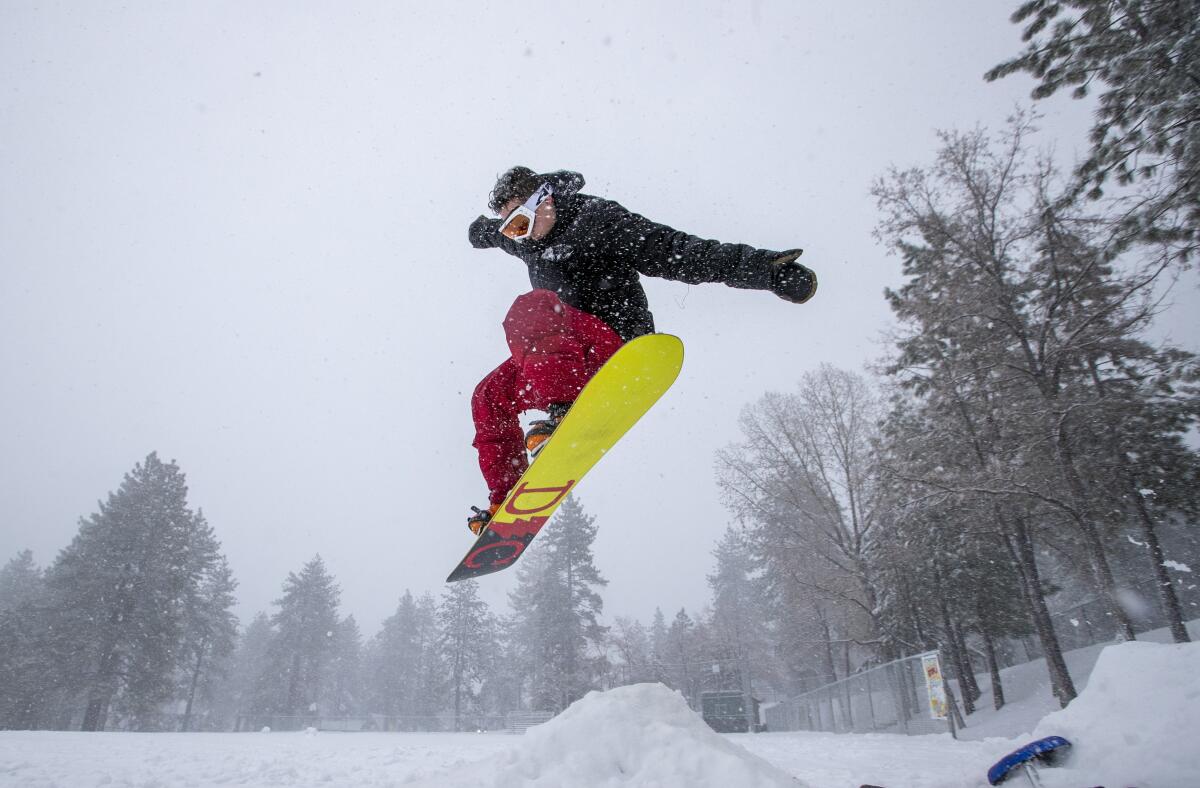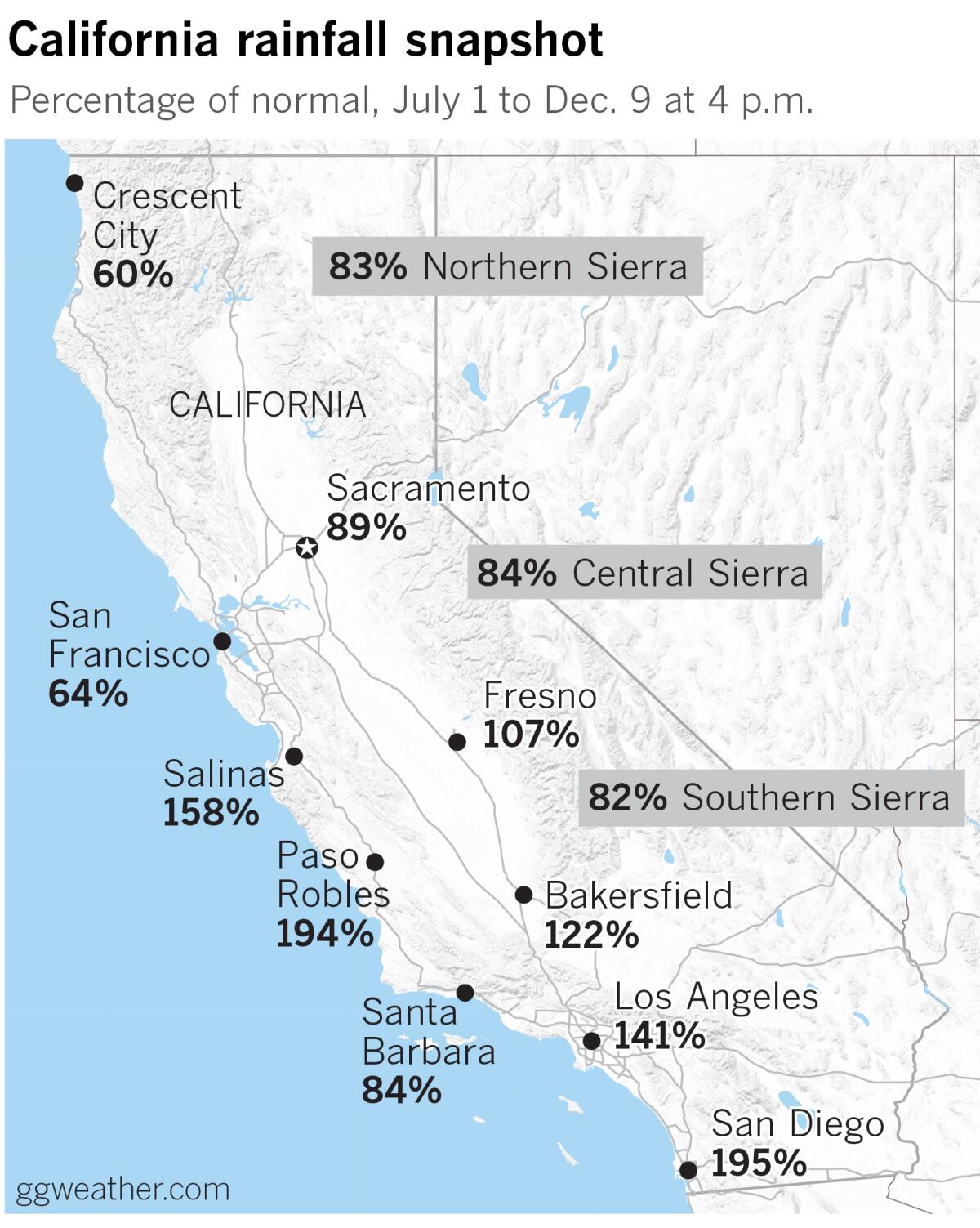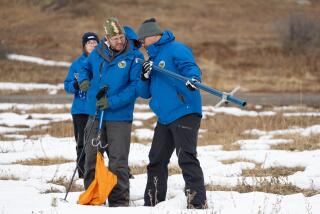Precipitation above normal in Southern California and adding up in the north

Skiers and snowboarders already know this: California’s recent storms have lifted the state’s precipitation totals to the respectable range in the northern part of the state, and to well above normal in the south, according to Jan Null of Golden Gate Weather Services.
The statewide distribution of precipitation for the period from July 1 to Dec. 9 has been irregular, said Null, showing the effects of concentrations caused by atmospheric rivers. For example, areas from the southern Bay Area south to Big Sur received especially heavy rain from one of these fire hose-like systems during Thanksgiving week.

Also, Null cautions that percent-of-normal figures can be a little deceiving. Roughly 3.5 inches of rain in Los Angeles from the beginning of the rainfall season on July 1 through Dec. 9 amounts to 141% of normal when that normal is 2.5 inches. But a similar amount, 3.7 inches, is just 64% of normal in San Francisco, where 5.8 inches would be expected during the same period.
This year, Northern California got a late start on its rainfall season while Southern California got an early start with some big storms that brought rain statewide. Ordinarily, the rainfall season would begin first in the northern part of the state, then follow a little later in the south.
But for getting a late start, the northern Sierra is off to a decent start. An eight-station index of measuring locations in the mountains north of Lake Tahoe is at 83% of normal. This is an area that includes the Sacramento, American and Feather rivers, as well as the state’s biggest dams. This area is crucial for water customers throughout the state, and in particular for Southern California.
The central Sierra Nevada’s five stations stood at 84% of normal as of Dec. 9, and the six stations in the southern Sierra were at 82% of normal.
Of course, how the season ultimately plays out is a tossup, especially since there’s no El Niño or La Niña in the equation this year. But skiers and snowboarders up and down California are putting their hopes in a repeat of a snow-choked winter like the last one.
More to Read
Sign up for Essential California
The most important California stories and recommendations in your inbox every morning.
You may occasionally receive promotional content from the Los Angeles Times.











